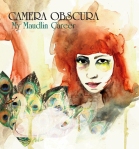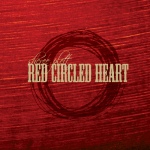What is Yerba Mate?
Yerba Mate is a form of tea that is common in parts of South America- namely Paraguay. In these parts Yerba Mate is shared in community, with the passing of Yerba in a circle of friends- as common as meeting at a coffee place, or offering tea to guests at a dinner party.
I believe Mennonite culture had a lot to do with introducing Yerba to parts of North America. In the early 20th century a large number of Mennonites emigrated to Paraguay to escape religious persecution, and to establish farming communities (for more information check out this article). It makes sense, then, that Yerba Mate is easy to find in areas where Mennonite farmers hang out- like Manitoba and Abbotsford .
Finding Yerba Mate
One of the more well known companies that produces Yerba Mate is Pajarito, located in Paraguay. Another more available brand is Guayaki.
Finding places to buy mate might be a bit of a challenge at first. In Abbotsford there is a Flooring/Import Store two stores away from Thumper’s Patch on George Ferguson. In other cities you can try asking around at coffee or tea places that carry fair trade stuff. If finding it still poses a challenge, there is always the option of buying Yerba online.
Making Yerba Mate
Yerba Mate is traditionally served using a Guampa and a Bombilla, but is also available in tea bags. A Guampa is basically a cup, and a Bombilla is a straw used to drink the Yerba. Over time a Guampa absorbs the flavor of Yerba, allowing a more full bodied flavor every time you drink from it.
Bombillas are generally made with stainless steel, but I prefer using a Bombilla made from Bamboo. A Bamboolla, as it were, does not contract heat from the Yerba as much, and does not leave a metallic taste as it breaks down with use. A Bamboola, like a Gourd, also absorbs the flavor of Yerba, adding to the flavor considerably. When washing out the Gourd you should probably avoid using soap, as this might make the Yerba taste weird.
You could try making your own bombilla out of bamboo, and use a ceramic cup as a substitute for a Gourd, or you can order both of these online.
Preparing the Yerba is pretty straightforward:
- Fill half, or three fourths, of the Gourd/Guampa with Yerba.
- Pour hot, not boiling, water into the Gourd until it’s full.
- Insert the Bombilla (usually I put the Bombilla in before adding the Yerba, but either way works).
- Enjoy.
- After drinking all the water fill up Gourd again.
- You can repeat this 5-6 times, until the Yerba loses flavour.
As with coffee, the more you try Yerba the more you notice differences in flavor in different types. As well you might not like it the first couple times you try it, but once you get used to the initial weirdnesses in the taste (much like coffee) you might start to like the rich peppery taste, reminiscent of standing on a prairie farm just after sunset.
For further reading, these three blogs focus specifically on Yerba Mate:
Cheers.
Next Chapter: Theological Reflections on Alcohol. Stay tuned.








